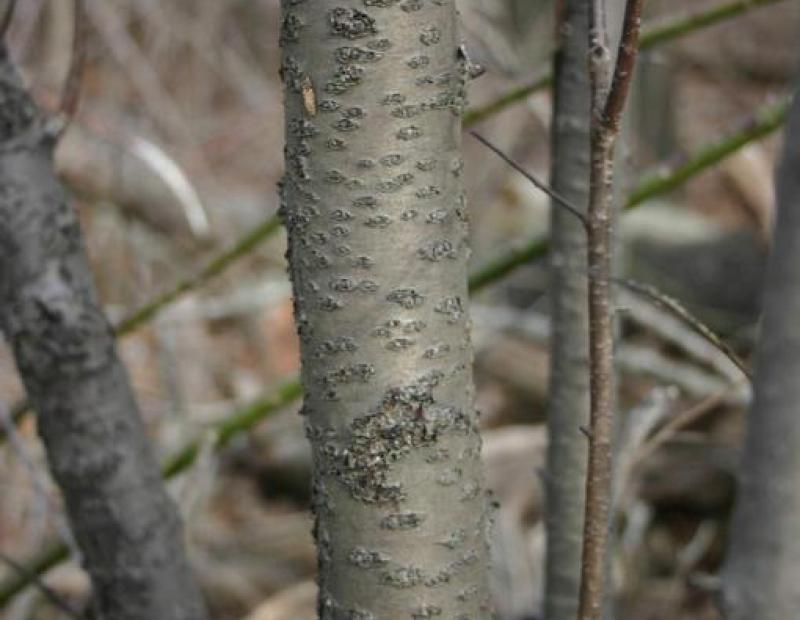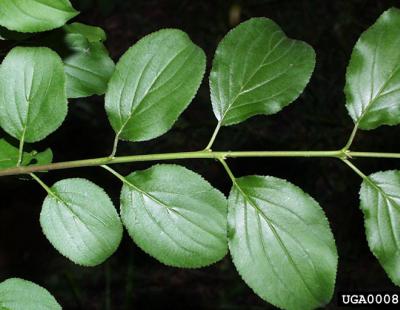- Terrestrial Plants
- Tree
Common buckthorn produces berries that have a cathartic effect and therefore are rapidly digested and excreted by birds, allowing the shrub to readily disperse. These plants can grow in dense thickets, crowding and outshading the native shrub and herb layer. They can have a negative agricultural effect, as it is a common host for crown rust fungus Puccinia coronata, a fungus that negatively impacts the production yield and quality of oats. It may also act as an overwintering host for the Asian soybean aphid Aphis glycines Matsumura, a pest on soybean plants.
Rhamnus cathartica is native to most of Europe and Western Asia and was introduced to the United States in the late 1700s. Common buckthorn was a popular species used for hedgerows, boundaries, and wildlife cover. The plant became widespread in the 1900s and the sale, importation, purchase, transportation or introduction of it is currently prohibited in New York State.
Common buckthorn is a dioecious plant; females bear flowers with one pistil and males bear flowers with four stamens. Fruiting only occurs on plants with female flowers. The shrub flowers during May and June while the leaves are emerging and the berries ripen during August and September. Fruit is effectively distributed by birds.
Rhamnus cathartica is found in all New England states and is widespread in the Lower Hudson region. The plant prefers lightly shaded conditions and readily invades open deciduous forests, but it is also found along forest edges, roadsides, and in fields. Common buckthorn prefers well-drained soil that is neutral to basic, but can be found in floodplains and riparian forests and can tolerate a broad range of soil types.









